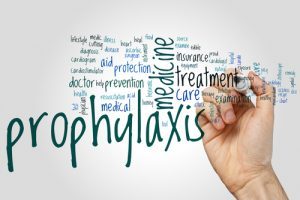- Home
- Editorial
- News
- Practice Guidelines
- Anesthesiology Guidelines
- Cancer Guidelines
- Cardiac Sciences Guidelines
- Critical Care Guidelines
- Dentistry Guidelines
- Dermatology Guidelines
- Diabetes and Endo Guidelines
- Diagnostics Guidelines
- ENT Guidelines
- Featured Practice Guidelines
- Gastroenterology Guidelines
- Geriatrics Guidelines
- Medicine Guidelines
- Nephrology Guidelines
- Neurosciences Guidelines
- Obs and Gynae Guidelines
- Ophthalmology Guidelines
- Orthopaedics Guidelines
- Paediatrics Guidelines
- Psychiatry Guidelines
- Pulmonology Guidelines
- Radiology Guidelines
- Surgery Guidelines
- Urology Guidelines
Preexposure Prophylaxis for HIV Prevention-An Update

Preexposure prophylaxis (PrEP) has the potential to prevent HIV transmission and ultimately to help eradicate this devastating viral infection. The Preexposure Prophylaxis for the Prevention of HIV Infection in the United States was published in an electronic format in July 2014 which was updated in 2016.
They have been updated to provides comprehensive information for the use of daily oral antiretroviral preexposure prophylaxis (PrEP) to reduce the risk of acquiring HIV infection in adults.
The key messages of the guideline are as follows:
- Daily oral PrEP with the fixed-dose combination of tenofovir disoproxil fumarate (TDF) 300 mg and emtricitabine (FTC) 200 mg has been shown to be safe and effective in reducing the risk of sexual HIV acquisition in adults; therefore,
o PrEP is recommended as one prevention option for sexually-active adult MSM (men who have sex with men) at substantial risk of HIV acquisition (IA)1
o PrEP is recommended as one prevention option for adult heterosexually active men and women who are at substantial risk of HIV acquisition. (IA)
o PrEP is recommended as one prevention option for adult persons who inject drugs (PWID) (also called injection drug users [IDU]) at substantial risk of HIV acquisition.(IA)
o PrEP should be discussed with heterosexually-active women and men whose partners are known to have HIV infection (i.e., HIV-discordant couples) as one of several options to protect the uninfected partner during conception and pregnancy so that an informed decision can be made in awareness of what is known and unknown about benefits and risks of PrEP for mother and fetus (IIB) - Currently, the data on the efficacy and safety of PrEP for adolescents are insufficient. Therefore, the risks and benefits of PrEP for adolescents should be weighed carefully in the context of local laws and regulations about autonomy in health care decision-making by minors. (IIIB)
- Acute and chronic HIV infection must be excluded by symptom history and HIV testing immediately before PrEP is prescribed. (IA)
- The only medication regimen approved by the Food and Drug Administration and recommended for PrEP with all the populations specified in this guideline is daily TDF 300 mg co-formulated with FTC 200 mg (Truvada) (IA)
o TDF alone has shown substantial efficacy and safety in trials with PWID and heterosexually active adults and can be considered as an alternative regimen for these populations, but not for MSM, among whom its efficacy has not been studied. (IC)
o The use of other antiretroviral medications for PrEP, either in place of or in addition to TDF/FTC (or TDF) is not recommended. (IIIA)
o The prescription of oral PrEP for coitally-timed or other non-continuous daily use is not recommended. (IIIA) - HIV infection should be assessed at least every 3 months while patients are taking PrEP so that those with incident infection do not continue taking it. The 2-drug regimen of TDF/FTC is inadequate therapy for established HIV infection, and its use may engender resistance to
either or both drugs. (IA) - Renal function should be assessed at baseline and monitored at least every 6 months while patients are taking PrEP so that those in whom renal failure is developing do not continue to take it. (IIIA)
- When PrEP is prescribed, clinicians should provide access, directly or by facilitated referral, to proven effective risk-reduction services. Because high medication adherence is critical to PrEP efficacy but was not uniformly achieved by trial participants, patients should be
encouraged and enabled to use PrEP in combination with other effective prevention methods. (IIIA) - WHO recommendation in September 2015 that “oral pre-exposure prophylaxis (PrEP) should be offered as an additional prevention choice for people at substantial risk of HIV infection as part of combination HIV prevention approaches”, partners in countries expressed the need for practical advice on how to consider the introduction of PrEP and start implementation.
WHO has developed this series of modules to support the implementation of PrEP among a range of populations in different settings.
For further reference log on to :
https://www.cdc.gov/hiv/pdf/risk/prep/cdc-hiv-prep-guidelines-2017.pdf

Disclaimer: This site is primarily intended for healthcare professionals. Any content/information on this website does not replace the advice of medical and/or health professionals and should not be construed as medical/diagnostic advice/endorsement or prescription. Use of this site is subject to our terms of use, privacy policy, advertisement policy. © 2020 Minerva Medical Treatment Pvt Ltd